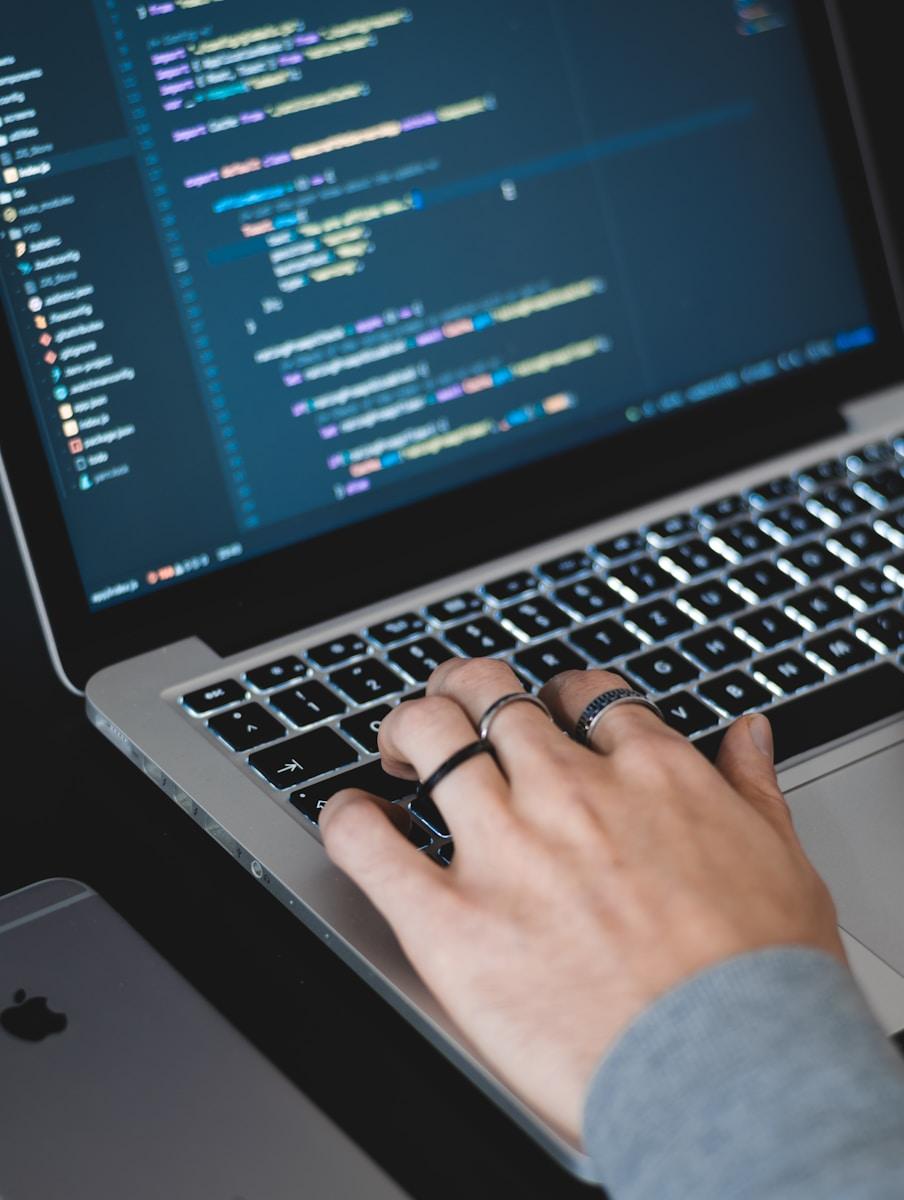Here’s a question for you:
How many people do you know that enjoy feeling stupid? …slow? behind the times? I don’t know a single one. Yet the computer and Internet explosion has resulted in thousands of people who feel exactly that way. I know because I felt that way myself.
When I was a computer novice, I bought several “helpful” books. You know – the kind whose titles proclaim that even idiots can understand computers and the Internet. When I began to read them, it took all of about 15 minutes for me to realize I was a lost cause. If these books were designed for dummies, I was in deep trouble because I could not understand ANY of it.
Even worse, my friends kept telling me that e-mail is so easy, that computers are simple and it only took them a week or so to learn!
If you are hearing similar things from your friends and family, do not let it intimidate you. You are NOT going to pick it all up in ‘a week or so’ and it is not ‘easy’ at first… but you CAN do it and it IS fun. Just give yourself some time. There are two things to keep in mind:
1. Many of those people are relatively new to the game, too and when you get a computer, THEY can feel like an expert.
2. When you venture onto the Internet a couple of times and start using e-mail, it’s exciting. After a week or two, you’ll start to understand and use some of the lingo and then, guess what? YOU will sound like an expert to another absolute beginner.
So, don’t worry, it’s not too late to start and there’s plenty of help along the way.
.
Email stationery
If you compose an e-mail message and decide to use email stationery instead of the plain white background, click the Format menu and go to ‘Apply Stationery’. Choose one from the list or click ‘More Stationery’ to view all the available styles.
Personalize your email presentation
If you think “Personal Computer” is an oxymoron, add a little individuality by jazzing up your e-mail messages to suit your personality. You can use electronic stationery, add sound clips or even record a message in your own voice that will play when recipients open your e-mail.
To add pizzazz to e-mail messages, you will need a few props. Make sure you can find those props when you need them by creating an new folder to house them. Double-click your ‘My Documents’ folder. Click the File menu, point to ‘New’ and click ‘Folder’. Name the folder ‘Pictures’ and then close My Documents.
E-mail Stationery – make yours from scratch
There are several e-mail add-on programs that allow you to pick animations, backgrounds and the like, but if you want your stationery to reflect your personal style, here’s how to make one from scratch.
You can use almost any picture or image on the Internet so when you find one you like, save it in your ‘Pictures’ folder.
Go to www.dahlia.org and you will see many beautiful dahlias. Put your cursor on any small picture, right-click and choose ‘Save Picture As’.
When the ‘Save Picture’ dialog box opens, click the drop-down arrow at the right of the ‘Save In’ box and click ‘My Documents’. Double-click your ‘Pictures’ folder, type Dahlia in the ‘File Name’ box and click the ‘Save’ button.
Open Outlook Express, click the little drop-down arrow beside the ‘New Mail’ icon on the toolbar and choose ‘Select Stationery’. When the dialog box opens, click ‘Create New’.
When the ‘Stationery Setup Wizard’ opens, click ‘Next’. Click the box beside ‘Picture’ to put a check mark in it and click the Browse button. From the drop-down arrow in the ‘Look In’ box, choose ‘My Documents’, double-click the ‘Pictures’ folder and then double-click that Dahlia file.
In the ‘Tile’ box, choose ‘Vertically’ from the drop-down list and see if you like it. If not, click ‘Horizontally’. Pick whichever one you like.
Put a checkmark in the ‘Colour’ box and pick a colour from the drop down colour menu. Click the ‘Next’ button to choose a font. Experiment with the fonts until you find one you like. Pick a size – I prefer at least size 12 – and a colour. If you chose a dark background colour, pick a font colour that will show up. For instance, if your background is dark red, make the font white. Click ‘Next’.
Don’t worry — you’re getting there…
Now for the margins. In the stationery preview pane, the text is probably over-lapping the dahlias. Increase the left or top margin until the text is clear of it and then click ‘Next’.
Name your masterpiece Dahlia and click ‘Finish’. Click the OK button and a new message window will appear with your very own stationery.
Now go ahead and strut – you deserve it.
When you want to send e-mail using this stationery, just click the little down arrow beside the ‘New Mail’ toolbar icon and choose Dahlia from the list.
If you receive an e-mail that has stationery you like, you can save it and use it for e-mail, too. Click the File menu and choose ‘Save as Stationery’. Give it a sensible name and click Save. It will appear in your stationery list, too.
Adding Sound
If you want to attach a sound you can really have fun. If you’re a golfer, try this one.
Follow the directions above using a golf motif instead of a dahlia. Go to www.titleist.com/htm/balls/prof.asp and save the picture of the plain white golf ball. It’s about half way down the page. Name it ‘Golfball’ and save it in your ‘Pictures’ folder. Create the stationery using a green background and white text.
Back on the Internet, go to www.favewavs.com/golf.htm, scroll down the list and right-click on ‘metal.wav’. Choose ‘Save Target As’. To save the sound in the correct folder, click the little drop-down arrow at the right of the ‘Save In’ space and select your (C:) drive. In the list of folders below, double-click the Windows folder. It will jump up to the ‘Save In’ space. Double-click the ‘MEDIA’ folder so it appears in that ‘Save In’ space. Type ‘golfswing’ in the ‘File Name’ space at the bottom and click the Save button.
Open Outlook Express and start a new message using your Golfball stationery by clicking the little drop-down arrow beside the ‘New Mail’ button on the Outlook Express toolbar. Address the e-mail as usual and compose your message. Click the ‘Format’ menu, point to ‘Background’ and then click ‘Sound’.
In the dialog box, click ‘Browse’. In the ‘Background Sound’ box, the MEDIA folder will appear in the ‘Look In’ box. Find your golfswing sound and double-click it. Click OK.
Send the message as usual and when the recipient opens your email, he or she will automatically hear the swoosh of the golfswing sound you attached. I can practically guarantee you will receive a “How did you DO that!?” response.
If golf is not your thing, use your imagination. One couple I spoke with recently made their snazzy stationery with pictures of saxophone down one side because they both love Jazz. They found a little jazz sound clip on a music site to complete the effect.
Go ahead! Unleash your imagination and send e-mail with panache!
.
PROGRAM SHORTCUTS
If you are using Windows 98, you can quickly open your favourite programs with one-click by creating a shortcut for each program and dragging it onto the Quick Launch bar. The Quick Launch bar is the small area to the right of the Start button. It probably already has a few icons in place: Internet Explorer’s big blue “e” and the Outlook Express envelope icon, for instance.
Icons on the Quick Launch bar only need a single click to launch the corresponding program. I have added icons for several of my favourite programs to it: Paint, Calculator, and Notepad, to name a few. It cuts down on time spent wading through the menu maze. Rather than go to Start, Programs, Accessories, then Notepad, all I have to do is click the Notepad icon on the Quick Launch bar. Much simpler.
First, make sure your Quick Launch shortcut is enabled by right-clicking a blank area on the taskbar and making sure there is a check mark beside Quick Launch. If you already have a shortcut to the desired program on the desktop, put your mouse pointer on the shortcut, click and hold down the button and then drag it down to the Quick Launch bar. When a black line similar to an I-beam appears, release the mouse button. Your new icon should take its place.
If you don’t have a shortcut on the desktop for the program, create one like this: Click the Start button, go to Programs, Accessories, or to whichever program you want, but don’t click on it yet. You have to right-click it, and click Create Shortcut. This will put a shortcut on the desktop and you can proceed with the instructions above.
.
EASIER WAY TO MAXIMIZE
If you get tired of trying to click the tiny maximize/restore button in the top right corner of a window, there is an alternative. The title bar, which runs right across the tip of each window, acts as a toggle switch. Double-click it to maximize the window; double-click again to restore the window’s original size.
.
BACK UP YOUR FAVORITES FOLDER
If you use Internet Explorer 5, it is easy to back your Favorites up. Open a browser window and choose File, Import and Export. When the wizard appears, choose Export Favorites and click Next. In the next frame, make sure Favorites is highlighted and then click Next again. Click the little button beside Export to a File or Address and click the Browse button. In the Select Bookmark File dialog box, click the drop down arrow beside the Save In box at the top. Click My Documents so that it appears in the Save In box. Now click the Save button. It will save a complete list of your Favourites. I’ve never encountered a situation where I lost or messed up my Favorites, but better safe than sorry.
.
SOUTHPAW’S MOUSE
Left-handers can switch their mouse buttons so that the right button dominates and the left button pops up menus. Click Start, Settings, Control Panel. Double-click the Mouse icon, click the “Buttons” tab and select the radio button labelled “Left-handed.” Click the “Apply” button and then click OK.
.
EMAIL TIPS
Since e-mail is the number one reason people connect to the Internet, why not learn how to use it like a pro? Here are some tips on how to enhance, customize and manage your e-mail, so you can get the most out of this great communication tool.
E-mail Shortcuts
Here’s a great tip if you send email messages to a handful of people more than others. Create a shortcut that automatically begins a new message, addressed to that person, with just one mouse click. Right-click on any empty space on the desktop, and choose New, Shortcut from the menu. In the Command Line box, type mailto: and then enter the recipient’s email address.
To create a shortcut to Joe Blow, enter mailto:[email protected]. Click the Next button, give it a name like “E-mail Joe” and click Finish. The shortcut will appear on your desktop. You can drag it down to the Quick Launch bar as discussed earlier, if you like. Or if you drag it down and release it on top of the Start button, it will appear on your Start menu.
Change the Mail Sound
Tired of hearing the same old sound when e-mail arrives in your Outlook Express inbox? Change it.
In Windows, certain functions are matched to preset sounds, like that little ‘Ding’ when you make an error or that music that plays every time you start your computer. These functions are referred to as ‘events’. It only takes a minute or two to change their assigned sounds, including the ‘New Mail Notification’ sound, so have some fun with them.
Go to www.eventsounds.com/mail.htm and click the links one at a time until you find one you like. My favourites are 937new.wav, message.wav and idmail.wav but AOL’s classic ‘You’ve got mail!’ clip is there, too.
Right-click the one you want and choose ‘Save Target As’ to open the ‘Save As’ dialog box. To save the sound in the correct folder, click the little drop-down arrow at the right of the ‘Save In’ space and select your (C:) drive. In the list of folders below, double-click the Windows folder. It will jump up to the ‘Save In’ space. Now double-click the ‘MEDIA’ folder. That’s the sound clip’s new home. Take note of the file’s name in the ‘File Name’ space at the bottom and click Save.
Click your Start button, then Settings, then Control Panel and double-click Sounds. In the ‘Events’ list, click ‘New Mail Notification’. Click the drop-down arrow in the ‘Name’ space and select your new sound file. Click Apply and OK. Now send yourself an e-mail so you can test the new sound.
Incidentally, if you never hear anything when mail arrives, click the Tools menu, select Options and on the General tab, select ‘Play sound when new messages arrive’. Be sure your speakers are on and the volume is turned up, too.
QUICK TIPS & TRICKS
To Change the Font
used to display incoming messages, select Options from the Tools menu and click the Read tab. Click the Fonts button and choose from the ‘Font size’ list.
If the toolbar in Outlook Express disappears, click the View menu, select Layout and then click Toolbar.
To send e-mail to a group of people without displaying all their addresses, address it to yourself and enter the recipients’ addresses in the BCC line of the message. If you don’t see the BCC line, click the View menu and click ‘All Headers’. The message will arrive without all the addresses listed at the top.
Receive e-mail as soon as someone sends it to you
If you have a cable connection to the Internet, you’re connected 24 hours a day. If you’d like to receive e-mail as soon as someone sends it to you, click the Outlook Express Tools menu. On the General tab, change the setting for ‘Check for new messages every’ to one minute. When a new message arrives, you will hear your new ‘New Mail Notification’ sound and a small envelope icon will appear in the system tray. The ‘system tray’ is the little area at the lower right corner of your screen that contains the clock and various icons for the programs that are running.
E-mail Shortcuts
Keyboard shortcut for common commands are very handy – especially for people who have difficulty with the mouse. To use Keyboard shortcuts, hold down the first key while you tap the second, then release both keys. In the case of a 3-key shortcut, hold down the first two while you tap the third.
Give a few of these Outlook Express shortcuts a try. You may find you prefer the keyboard to the mouse.
Ctrl-M: Send and receive mail
Ctrl-D: Delete a message
Ctrl-Shift-B: Open your Address Book
Ctrl-R: Reply to a message
Ctrl-I: Open the Inbox
Ctrl-N: Create a new message
.
Forwarding Email
Okay. A show of hands, please: How many of you send and receive e-mail? Ah…I see a few of you do. Without a doubt, many more people will be joining us after Saint Nick rassles all those computers down all those chimneys.
Would you like to give all your e-mail friends a gift that keeps on giving through the coming year? It doesn’t cost a cent, requires very little effort and is guaranteed to please. It is also good netiquette.
Here it is:
Do not touch that “Forward” button unless you know how to use it.
I don’t like to ruffle any feathers but there are some things you Mad Forwarders need to know. I have yet to hear a single person say, “I just LOVE it when my friends forward jokes to me. Especially when they begin with the address of every single person who previously forwarded it.”
Anyone who has read of few of my columns knows that I love using computer shortcuts but using the Forward button without cleaning up the message is one shortcut I never employ. It is annoying to have to scroll through pages of address headers or to drill down through several attached messages before getting to the actual e-mail body.
If you want to send a joke to your friends, do them a favour by deleting all those message headers, especially if you are sending it to an entire group of people. It is a simple procedure. Just click the Forward button, highlight all the message headers, hit Delete and THEN hit Send. The joke will be much more welcome, believe me.
Now here’s the feather-ruffling part: Don’t Forward Every Little Joke You Encounter. Nobody likes getting eight forwarded jokes a week when they haven’t asked for them. Many of those joke e-mails contain cute little animations or pictures that can tie up a friend’s Internet connection for a long time, particularly if they have an older computer or a slow connection speed.
Trust me on this, folks. If your friends haven’t said, “Those jokes you always send me are terrific! Keep them coming,” take them off your mailing list. If they DO want them, they’ll let you know.
.
EMPTYING THE TRASH
If you want a quick way to empty your Deleted Items or Trash folder, try this shortcut. Click one of the items you want to permanently delete and then hold down the Ctrl key while you hit A. This will select the folder’s entire contents. Release the Ctrl key and hit Delete on your keyboard. When the “Are you sure you want to…” dialog box, hit y on your keyboard instead of clicking Yes with your mouse.
If you only want to delete a block of them, click the first one in the list then hold down the Shift key and click the last one you want to delete. Now, release the Shift key, hit your Delete key and then y.
If the files you want are not in consecutive order, you can choose individual files or messages by holding down the Ctrl key while clicking the files to delete. Release the Ctrl key, hit delete and then y.
MORE WINDOW SPACE
Customize your browser so you can see more of the window. In Internet Explorer go to the View menu and remove the check mark beside Status Bar, if there is one. Then click View again, point to Toolbars and remove the check mark beside Links.
For even more room, click an empty spot on your taskbar and choose Properties. On the Taskbar Options tab, put a check mark beside Auto Hide. Your taskbar will sink out of sight, yielding additional screen space. To access the taskbar again, bring your mouse pointer down to the very bottom of your screen and the Taskbar will rise. You can undo this setting anytime by clearing the Auto Hide check box.
.
Custom Keyboard Shortcuts
If you like using keyboard shortcuts as much as I do, try this one. Instead of going through the Start menu maze, you can create custom shortcut key combinations for programs you use all the time. This will only work with Windows shortcuts, not with the programs themselves and there are two rules you must follow.
First, the shortcut has to be on the Desktop or in the Programs menu, that is – accessed by clicking the Start button and pointing to Programs.
Second, the key combination must consist of a letter or number plus at least two of these three keys: Ctrl, Alt, and Shift.
Try it with a Program menu item first, WordPad for example. Click on Start, point to Programs, Accessories then right-click on WordPad. Now click on Properties. On the General tab, click once in the Shortcut key box and press the key combination you want to use. If you only press a letter or number, Windows will automatically assign Ctrl+Alt to it. Check this out by just typing w in the Shortcut key box.
Click OK.
Now give it a try. Hold down the Ctrl and Alt keys while you hit w. Now go ahead and make as many as you want!






